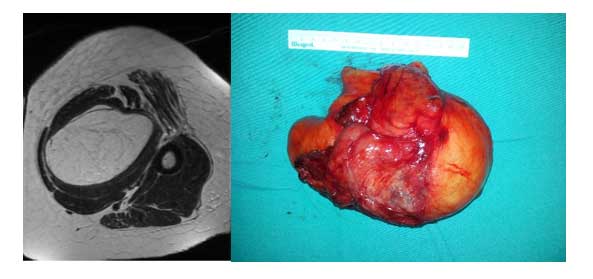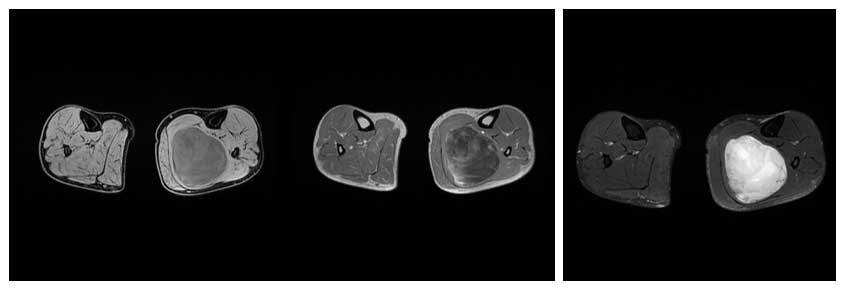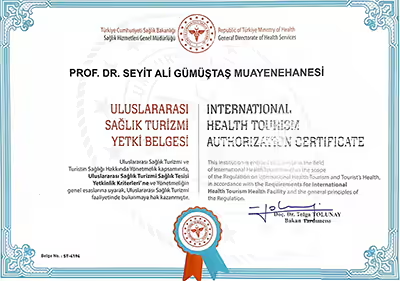LIPOSARCOMA
- Hits: 1131
Liposarcoma is the second most common malignant soft tissue tumor. The exact cause is unknown, but it originates from fatty tissue.
The exact cause is unknown, but it originates from fatty tissue. It can occur at various ages, but most commonly after the age of 40.

It originates from adipose tissue and although it can occur in different parts of the body, it is often localized in the thigh. There are many subtypes.
- Well differentiated: This is the most common type and only surgical removal is sufficient. It may recur after surgery, but metastasis is not expected.
- Myxoid type: Sensitive to chemotherapy and radiotherapy. Tends to metastasize. Multiple foci may be seen at initial presentation. It may metastasize outside the lungs to the abdomen, soft tissues and bone. Whole-body MRI may be preferred to PET_CT for screening. The cellularity of the tumor on pathological examination is important in terms of recurrence and metastasis. The risk is high with >5% round cell component.
- Pleomorphic type: It may present as multiple foci and may grow rapidly.
- Dedifferentiated type: Poor prognosis. Patients may describe recent pain and rapid growth of a long-standing mass.
- Mixed type: Rare

Patients often present to the physician with a complaint of slowly increasing swelling. Pain is very rare.
Liposarcomas are usually deep-seated and large, but can also be small and superficial. The fact that the swelling has been present for a long time and is painless may mislead the patient and physician that it is benign.

On physical examination, the swelling is usually soft, mobile, and painless.
For these patients, we most often use MRI with medication as the imaging modality. MRI gives us detailed information about the location, size, boundaries, and contents of the tumor. MRI is also used to plan surgery, evaluate response to chemotherapy and radiation, and monitor for recurrence.

The definitive diagnosis of liposarcoma is made by biopsy after clinical and radiological evaluation. The biopsy is often performed using a closed procedure with special needles. It is important that the physician performing the biopsy is an orthopedic oncologist who specializes in bone and soft tissue tumors, and that the pathologist evaluating the biopsy specimen is experienced in this area.

Patients diagnosed with liposarcoma will undergo a CT scan, whole-body MRI or PET-CT to detect metastases (often to the lungs).
The main treatment for liposarcoma is clean removal of the tumor by surgery. The tumor that is not removed cleanly with wide margins has a nearly one hundred percent recurrence


Nüks durumunda cerrahi ile tümörün yeniden geniş (temiz) sınırlar ile çıkarılması önerilir. Metastaz durumunda ise kemoterapi, radyoterapi ve cerrahi seçenekleri kombine edilebilir.

